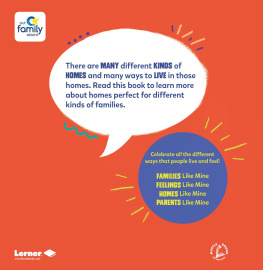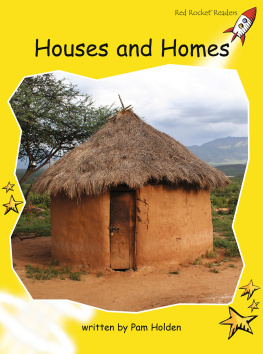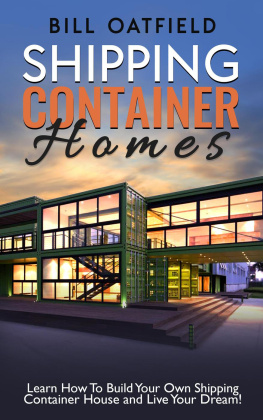Also by Bradley Craig
Between Two Homes: A Coparenting Handbook
Between Two Homes (Entre Dos Hogares): Manual Para La Crianza Compartida
Between Two Homes:
A Coparenting Handbook

Bradley S. Craig
LMSW-IPR, CFLE
Copyright 2014 by Bradley Craig
(BTH Publications, A Division of Between Two Homes , LLC.)
All rights reserved.
No part of this publication may be reproduced, distributed, or transmitted in any form or by any means, including photocopying, recording, or other electronic or mechanical methods, without the prior written permission of the publisher, except in the case of brief quotations embodied in critical reviews and certain other non-commercial uses permitted by copyright law. For permission requests, write to the publisher, addressed Attention: Permissions Coordinator, at the address below.
This book is intended for educational purposes only. It is not intended to constitute mental-health therapy, give information about specific mental-health disorders, or provide information about medications to treat mental-health disorders. Readers are encouraged to discuss specific mental-health questions with a licensed mental-health therapist. This book is not intended to constitute legal advice. For answers to specific legal questions, please consult with a licensed attorney.
BTH Publications may be ordered through booksellers or by contacting:
Between Two Homes,
PO Box 1353
Mineola, TX 75773
www.betweentwohomes.com
(800) 239-3971
ACKNOWLEDGMENTS
I could not have learned and grown in this field without the contributions, insights, and dedication of my professional peers. The Association of Family and Conciliation Courts is the leading organization setting standards of practice for this profession, and I have spent many hours in various workshops at state and international conferences learning from leaders in the profession of helping families through transitions. In addition, I have learned a great deal from the members of the North Texas Families in Transition professional workgroup, the collaborative practice groups I have been a member of, and the attorneys and judges I have had the fortune to practice with and serve.
I would be remiss to not acknowledge the families I have had the privilege to work with. Through their experiences, I have gained far more insight than literature, my own experiences, or lectures could provide me. Hearing both the pain and joy of families raising children between two homes helps me continue my course of work in this field. Despite frustrations and occasional setbacks, the continued feedback from parents about the impact of my parenting classes and other services reminds me why I do what I do.
DEDICATION
This book is dedicated to my loving wife, Patty, my sons, Todd and Scott, and my mother. It is also dedicated to my mentor Dr. Don Granvold, who left this world too soon and who encouraged me publish, publish, publish.
AUTHORS NOTE
First, thank you for purchasing this book. You may be a parent, a relative, an interested party, or a professional working with families raising children between two homes. Whatever the reason for your interest, my hope is that this book will provide you with insights to help improve the quality of life for children growing up in one or more homes.
My own parents divorced when I was ten years old, and my passion for working in this field stems from that experience. I began professionally specializing in working with families raising children between two homes in 1993, when I was hired by Family Court Services in Tarrant County, Texas, as a caseworker. I had the good fortune to interact with many skilled professionals, including judges and attorneys, who helped me gain a different perspective of the family-law process and how the system at times truly protects children. What I did not experience (with a few exceptions) were colleagues who were burnt out, supervisors who were there for a check, judges who did not care, or attorneys who were willing to destroy families for the right price. Instead, I experienced colleagues who cared about families and were willing to mentor me, supervisors who cared about improving my quality of work, judges who were creative and sincerely vested in the best interests of children, and a vast majority of attorneys who were solution focused and collaborative. I was extremely fortunate to have had these experiences.
Other than a few cases that I was able to mediate, most of the work I did for the county was forensic investigations on behalf of and at the direction of various family-court judges. My job was to complete custody evaluations, where I made recommendations to the court regarding parenting-time arrangements for children. I enjoyed meeting and learning about the families, making recommendations, and even at times taking the stand to defend my investigations.
During my investigations, parents would tell me the truth, tell me half-truths (mostly regarding their strengths and the deficits of the other family members), or outright lie to me. My job was to ferret out the truth of these stories by interviewing the parents and children, getting information from family and friends, and gathering professional records, such as school transcripts and psychological and medical records of the parents and children.
Parents often do not realize how easy it is to gather records and instead believe a custody evaluator will accept just the he said, she said version of the story. But by digging deep into records and interviewing other sources, an investigator can determine the truth, or the lack thereof. I was often able to prove whether the stories parents shared with me were factual, manipulated, or clearly deceptive. I had the honor to prepare reports that helped guide judges to produce orders in the best interests of the children.
Over time, however, I realized I was negatively affecting (even if only temporarily) the lives of the most important individuals when families are in litigation: the children. When parents would come to my office, so often it was clear they were not acting as mom and dad but instead as petitioner and respondent. Many times they would share with me how rotten their coparent was as a person and what a bad parent that coparent was, and they would then want me to talk to all their friends and relatives who shared their point of view. After hearing their stories, I would then interview their friends, families, and children and gather all their private records, which would later be shared in a courtroom full of strangers.
I noticed some strange byproducts of this process. As the dust was settling during the investigation, the parents would typically begin working together, if only because I was evaluating them both as a parenting unit. However, once I released my custody evaluation full of all the negative things they were saying about each other; what their friends, relatives, and professionals were saying about them; and what their private records revealed, any positive progress made from the time I started the study until the date it was released vanished, and the distance between the parents was greater than before the investigation began.
I realized the ones paying the price for this regression are the children, the very people the system seeks to protect. So I decided to leave the county and begin interventions to help families work together to successfully raise their children between two homes. One of my first steps was to design a coparenting class, which is the basis for this book.
My goal in writing this book, and in all the services I currently provide, is to help adults work together as a family. I want families to keep the power of the family in their hands. My goal is to shift parents from a litigation mindset to the business of coparenting, and ultimately to improve the quality of life for children growing up between two homes.









